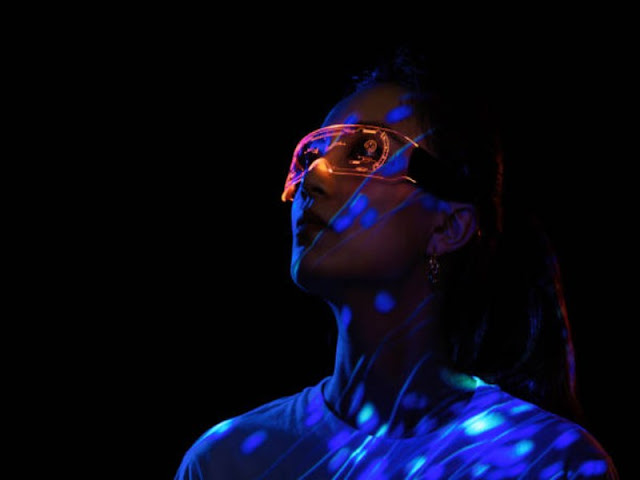Featured
- Get link
- X
- Other Apps
Future Trends in Technology

Future Trends
The landscape of technology is ever-evolving, and
anticipating future trends involves examining current advancements and
imagining their potential trajectories. Several emerging technologies are
poised to shape the future, influencing industries, transforming daily life,
and presenting both challenges and opportunities. Here are some anticipated
trends and innovations that could define the technological landscape in the
coming years.
1. Artificial Intelligence (AI) Evolution: Artificial
Intelligence continues to advance rapidly, with future trends focused on
enhancing AI capabilities. Anticipated breakthroughs include more sophisticated
natural language processing, improved machine learning algorithms, and the
development of AI systems capable of generalized problem-solving. AI's impact
will extend across industries, from healthcare and finance to manufacturing and
customer service, streamlining processes, automating tasks, and driving innovation.
2. Quantum Computing: Quantum computing represents a
paradigm shift in computational power, with the potential to solve complex
problems at speeds unimaginable for classical computers. As research
progresses, quantum computers are expected to impact fields such as cryptography,
drug discovery, climate modeling, and optimization problems. The realization of
practical quantum computing would open new frontiers in scientific discovery
and problem-solving.
3. Internet of Things (IoT) Expansion: The Internet
of Things, where everyday objects are connected to the internet and each other,
is poised for significant expansion. Future trends include the proliferation of
smart homes, cities, and industries, with interconnected devices enhancing
efficiency, data collection, and automation. The integration of 5G technology
will further accelerate IoT adoption, enabling faster and more reliable
communication between devices.
4. Augmented Reality (AR) and Virtual Reality (VR)
Integration: AR and VR technologies are expected to become more integrated
into various aspects of daily life. From immersive gaming experiences to
practical applications in healthcare, education, and remote work, AR and VR
will reshape how people interact with digital information. Enhanced hardware
and more intuitive interfaces will contribute to the widespread adoption of
these technologies.
5. Biotechnology Advancements: Biotechnology is
poised for groundbreaking advancements, including progress in gene editing
techniques like CRISPR-Cas9. These breakthroughs have far-reaching implications
for personalized medicine, agriculture, and environmental conservation. The
ability to modify genes for therapeutic purposes and to enhance crop resilience
will contribute to solving pressing global challenges.
6. Sustainable and Green Technologies: The emphasis
on sustainability will drive innovations in green technologies. From renewable
energy sources like solar and wind power to advancements in energy storage and
transportation, the future will witness a growing commitment to environmentally
friendly solutions. Sustainable practices in manufacturing, circular economy
initiatives, and eco-friendly materials will become integral to technological
development.
7. Edge Computing: Edge computing involves processing
data closer to the source of its generation rather than relying solely on
centralized cloud servers. This trend is driven by the need for low-latency,
real-time processing, particularly in applications like autonomous vehicles and
the IoT. Edge computing will reduce data transfer times, enhance security, and
enable more responsive applications.
8. Blockchain Beyond Cryptocurrency: Blockchain,
known for its association with cryptocurrencies, is anticipated to find
applications beyond finance. The technology's decentralized and secure nature
makes it suitable for areas such as supply chain management, healthcare data
sharing, and voting systems. Blockchain has the potential to revolutionize
trust and transparency in various industries.
9. Robotics and Automation: Advancements in robotics
and automation will continue to impact industries such as manufacturing,
healthcare, and logistics. Collaborative robots, or cobots, will work alongside
humans, performing tasks that require precision and efficiency. Automation will
extend to areas like autonomous vehicles, drone deliveries, and smart
factories, enhancing productivity and safety.
10. Cybersecurity Innovations: As technology evolves,
so do cyber threats. Future trends in cybersecurity will focus on advanced
threat detection, AI-driven security solutions, and quantum-resistant
cryptography. With an increasing number of devices connected to the internet,
securing digital infrastructures will be crucial to safeguarding sensitive data
and maintaining trust.
11. Telemedicine and Digital Health: The COVID-19
pandemic accelerated the adoption of telemedicine, and this trend is expected
to continue. Remote healthcare services, wearable health monitoring devices,
and digital health platforms will become more prevalent, offering personalized
and accessible healthcare solutions.
12. Personalized and 3D Printing: Advancements in personalized medicine and 3D printing technologies will revolutionize healthcare. Personalized medicine tailors treatments to individual genetic profiles, improving efficacy and minimizing side effects. 3D printing will be used for customized medical implants, prosthetics, and even organs, transforming the field of healthcare.
Conclusion: The future of technology is filled with exciting possibilities and transformative innovations. From the evolution of AI and quantum computing to the integration of AR and VR in daily life, these trends will shape industries, redefine how we interact with digital information, and address global challenges. As these technologies advance, ethical considerations, regulatory frameworks, and a commitment to inclusivity will be essential to ensure that the benefits are realized responsibly and equitably. The pace of technological evolution is set to accelerate, promising a future where innovation contributes to solving complex problems and enhancing the well-being of individuals and society as a whole.
- Get link
- X
- Other Apps

